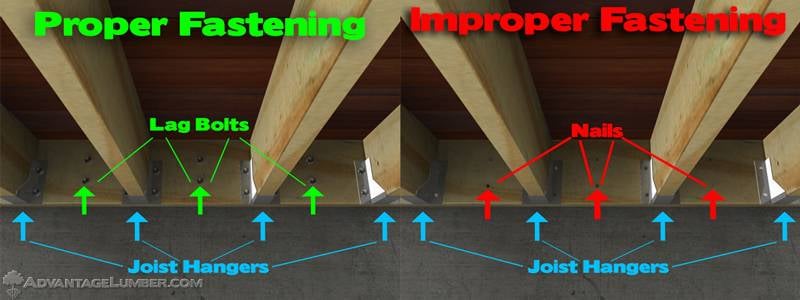
Did you know over 40 million decks in the United States are in serious need of repair or replacement?
How would you feel if you discovered your deck was not up to code and could be the most dangerous area of your home?
If your deck was built prior to 1999, don’t neglect it any longer! With a few simple steps you can ensure you will have a safe outdoor space, up to code and is safe for you and your family to enjoy.
First thing’s first: if you own a deck that is over 15 years old or are unsure about the safety and stability of the structure, call a local licensed contractor who is familiar with your local building codes and can judge the safety of your deck.
Whenever you read a story, or watch a news report on deck failure, the cause is almost always due to how the deck was attached to the house. Many years ago there were no codes on how decks needed to be built. Nails were once an acceptable fastener to be used. Over time, these fasteners are known to corrode, which in turn deteriorate the wood, or the wood expands and contracts around the nail causing the nail to literally slip out without notice.
Prior to 2003 all pressure treated decks were treated with a chemical called: Chromated Copper Arsenate (CCA). This chemical was used to increase the lifespan of the lumber, but actually had some negative effects. When pressure treated lumber comes in contact with galvanized hardware, the chemicals eat through the hardware, causing the hardware to corrode, and the deck to fail.
Something else you probably didn’t know: pressure treated lumber, used before 2003, was actually treated with Arsenic. Yeah, you heard me right, ARSENIC! A single 12 foot 2 x 6 board contains around 27 grams of arsenic – that’s enough to kill over 200 adults. So every time you come into contact with your pressure treated deck, you are making yourself vulnerable to the dangers of arsenic.
The obvious thing to do it to replace any loose or corroded fasteners. If the fasteners are nails, replace them all together. Lag bolts are now what national code requires, and are more secure. These bolts have nine times the resistance and have greater holding power than any nail.
Checking your deck regularly will also give you peace of mind. If you do happen to see anything that needs attention, contact a local licensed contractor or consult with your local building department FIRST prior to making any repairs. You don’t want to assume you’ve fixed something just to find out years later your fix wasn’t to code or could pose future hazards.